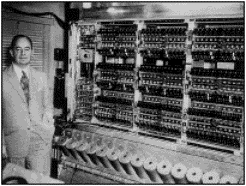
The principle of superposition is closely connected to the indeterminism of quantum phenomena. If the principle didn't hold (i.e. if the set of state vectors necessary to fit the empirical data did not include all their mutual superpositions), one could possibly find a deterministic model of quantum phenomena. Yet, a careful examination of the correlations existing between entangled systems shows that such models (or at least a large class of them) are not rich enough to fit all the situations covered by the quantum formalism (see wave-particle duality).
Speculations that quantum states may have a deeper meaning than that of a pure predictive tool have led some physicists to argue against the completeness of quantum theory.

A second aspect is illustrated by the following situation. Consider an atom in a box and suppose that the associated wave function gives a uniform probability of finding the atom anywhere inside the box. Now suppose that at time t0 we measure the exact position of the atom and find it in a small region around point ![]() . An immediate repetition of the measurement will of course confirm this information. This means that the probability of detecting the atom - a uniform distribution at t < t0– has become a peak differing from zero only in a small region centered in
. An immediate repetition of the measurement will of course confirm this information. This means that the probability of detecting the atom - a uniform distribution at t < t0– has become a peak differing from zero only in a small region centered in ![]() . In other words, it appears as an abrupt and unpredictable change in the mathematical form of the wave function had been induced by the very act of the observation. One says in this case that the wave function has undergone a reduction (or collapse). If the wave function is supposed to mirror an actual state of affairs, its collapse seems to entail a real physical process which remains entirely unexplained. On the other hand, if - following the Copenhagen view - the wave function is regarded as just an abstract predictive symbol, the only thing that demands to be explained is why, once the measurement has been carried out, the correlations detected in practice (in any further, practically realizable series of tests) are precisely those predicted by the reduced form of the wave function. Put in these terms, the second aspect of the ‘measurement problem' appears, like the first one, a problem of explaining why certain correlations implied by the superposition principle are not actually observed (see Schrödinger's cat for a detailed discussion).
. In other words, it appears as an abrupt and unpredictable change in the mathematical form of the wave function had been induced by the very act of the observation. One says in this case that the wave function has undergone a reduction (or collapse). If the wave function is supposed to mirror an actual state of affairs, its collapse seems to entail a real physical process which remains entirely unexplained. On the other hand, if - following the Copenhagen view - the wave function is regarded as just an abstract predictive symbol, the only thing that demands to be explained is why, once the measurement has been carried out, the correlations detected in practice (in any further, practically realizable series of tests) are precisely those predicted by the reduced form of the wave function. Put in these terms, the second aspect of the ‘measurement problem' appears, like the first one, a problem of explaining why certain correlations implied by the superposition principle are not actually observed (see Schrödinger's cat for a detailed discussion).
The far-reaching implications of the superposition principle have also been analyzed in the framework of logic. At the price of modifying the axioms of classical logic, one can picture the microscopic world underlying quantum phenomena in terms of objects and properties. Because they obey the rules of quantum logic, however, such objects have characteristics that are quite different from those of their classical counterparts.
The study of the formal structure of the state space, and in particular of entangled states, has proved very stimulating in the fields of information, communication and computer science. Recent experiments have demonstrated the possibility of ‘teleporting' a quantum state, broadcasting crypted quantum information and entangling a few quantum logic gates in order to implement elementary quantum algorithms (see also Schrödinger's cat).
The Schrödinger's cat paradox, for example, emphasises the fact that the principle of superposition does not seem to apply to the ‘macroscopic' world, although there is nothing in quantum mechanics that forbids the entanglement between atomic systems and macroscopic bodies. As pointed out by the mathematician John von Neumann, this situation presents itself each time that a measurement is carried out, since, according to quantum mechanics, the observed system gets entangled to the measurement apparatus. This is one aspect of the so called ‘measurement problem' (see Schrödinger's cat).



